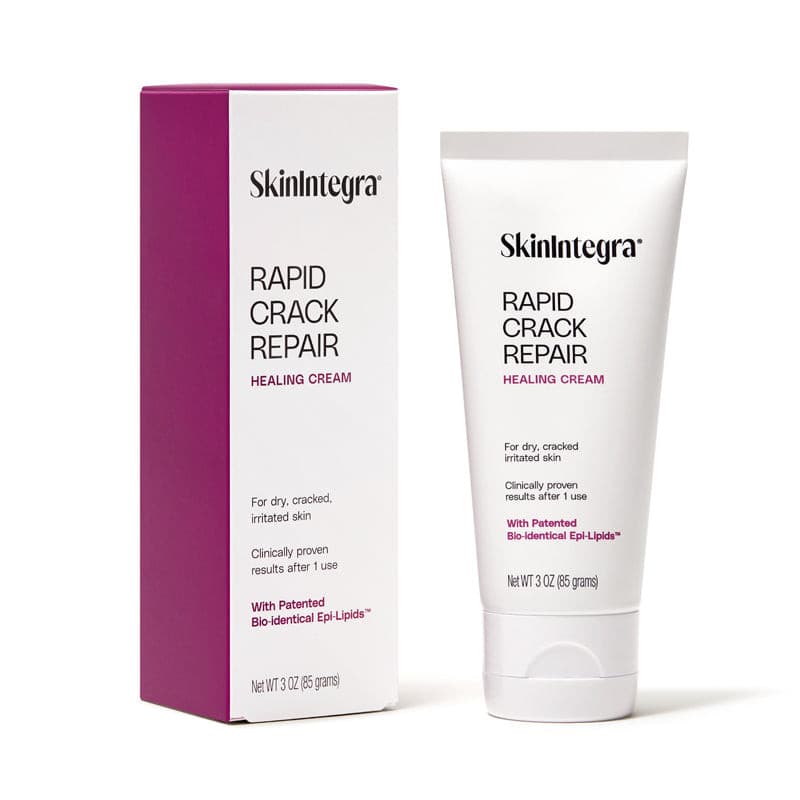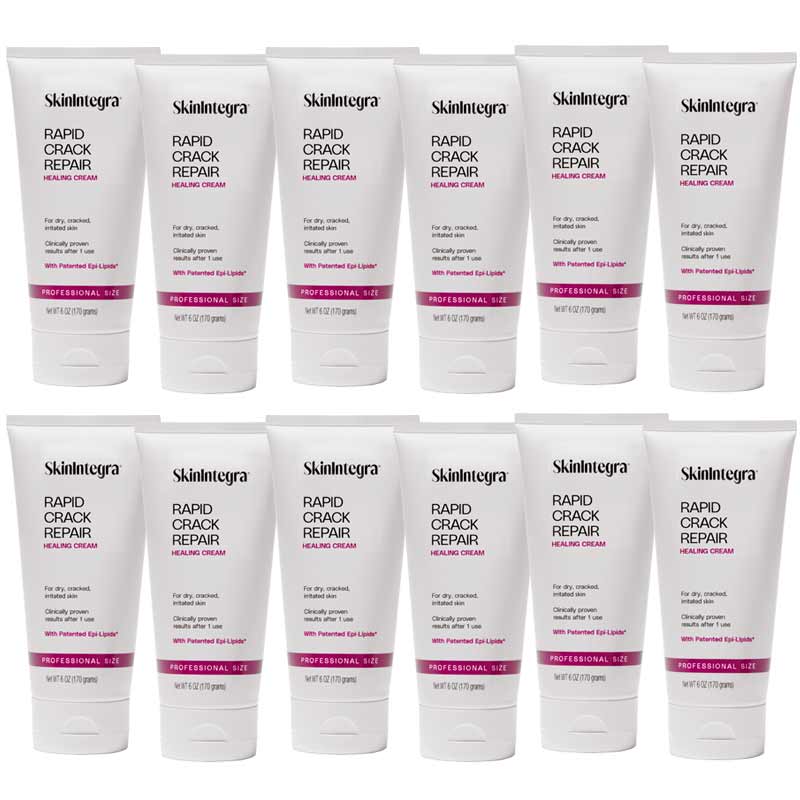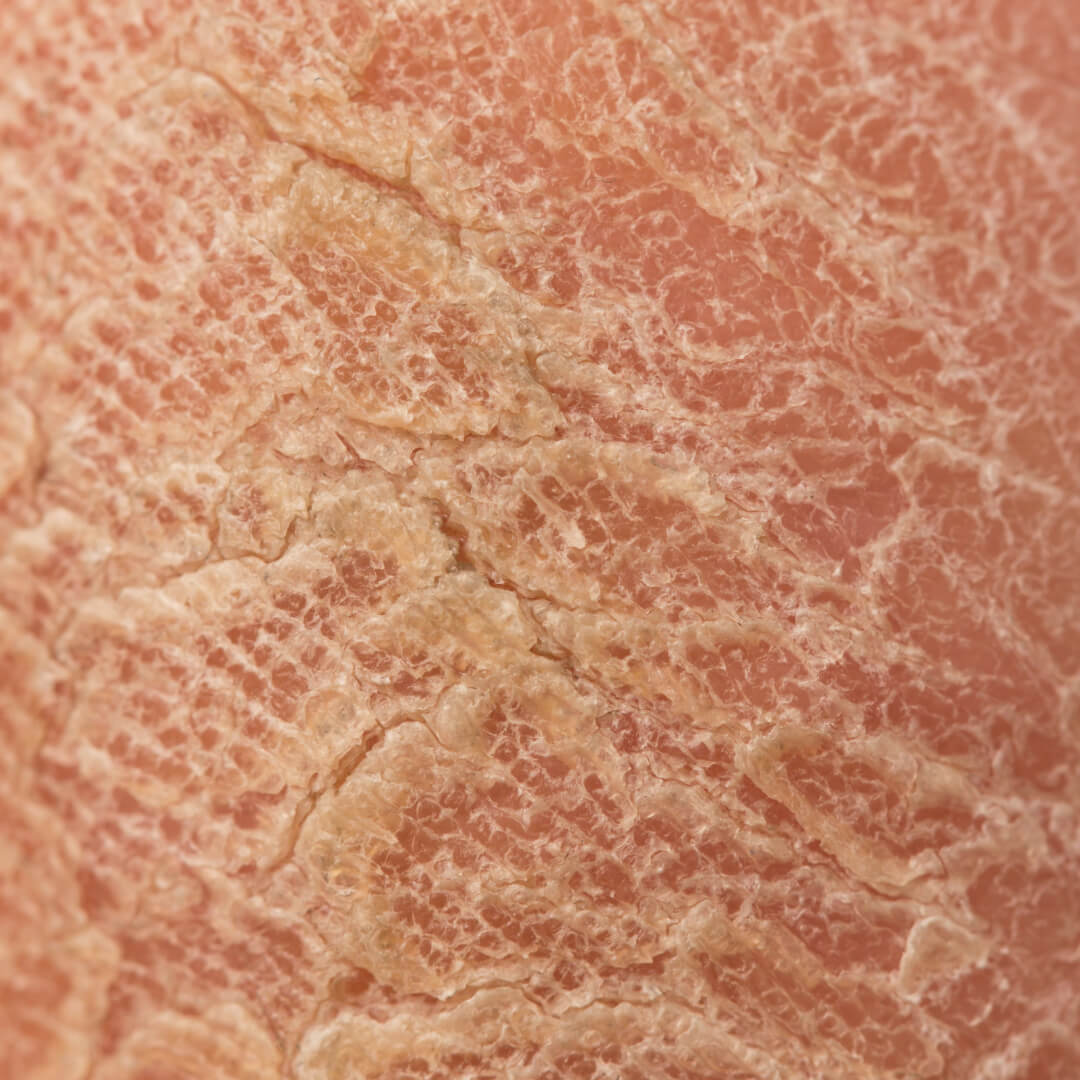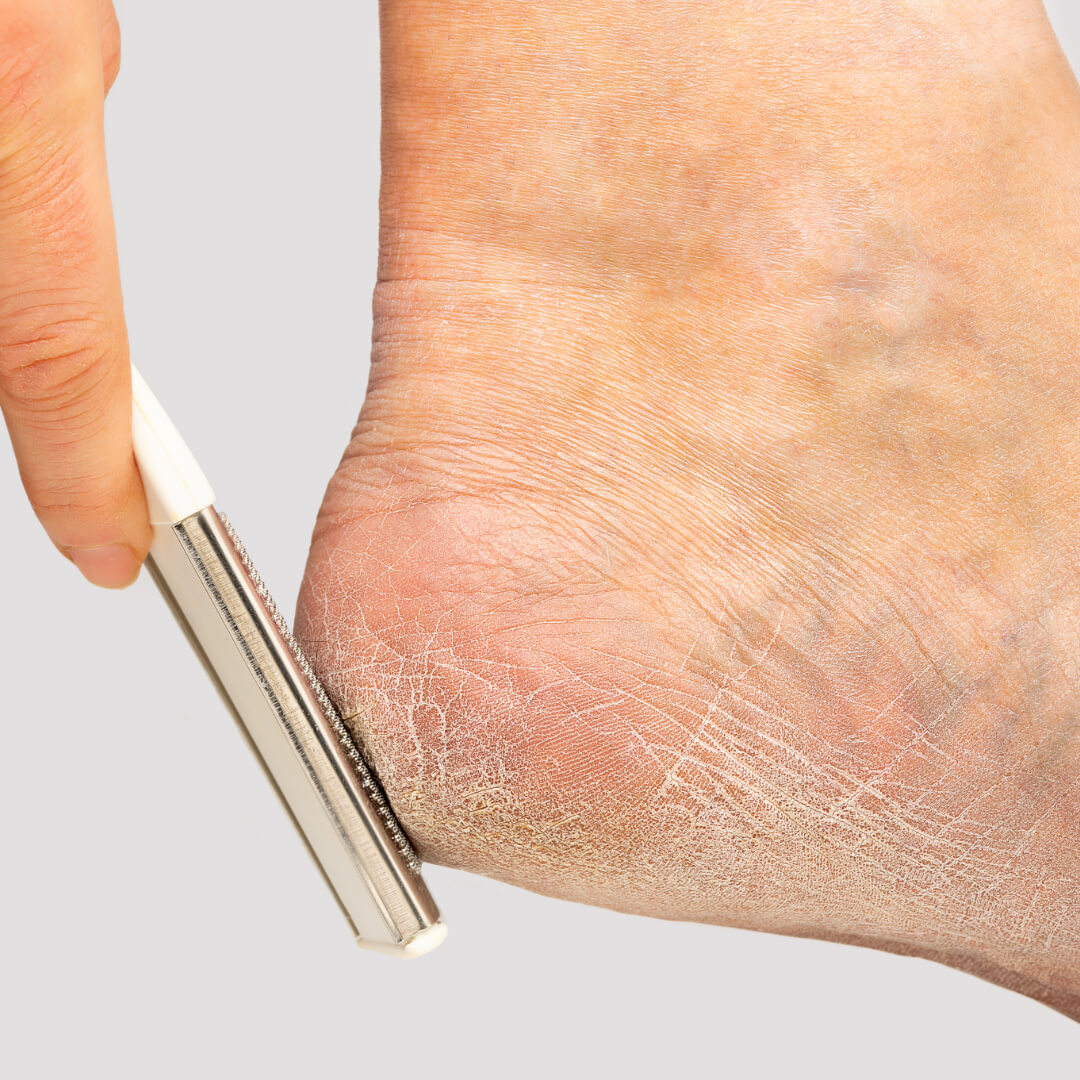Cracked heels can be a frustrating and an uncomfortable condition that affects many people. Cracked heels can sometimes pose infection risks and signal underlying health problems, including systemic diseases like diabetes. This article delves into the various causes of cracked heels and compares the current standard of care, urea-40 with SkinIntegra Rapid Crack Repair Cream, a novel topical treatment formulated to accelerate healing in individuals with diabetes who struggle with cracked heels that do not heal well, making them even more prone to infections.
Main Causes of Cracked Heels
Here are some key factors that contribute to cracked heels:
- Dry Skin: Lack of moisture can lead to rough, dry patches on the heels.
- Cold Weather: Low humidity levels in winter can dry out the skin.
- Prolonged Standing: Standing for long periods can put pressure on the heels, causing skin to thicken and crack.
- Improper Footwear: Shoes that don’t fit well or lack support can contribute to heel cracking.
- Obesity: Extra weight increases pressure on the heels, making them more prone to cracks
- Medical Conditions: Conditions like diabetes, eczema, and psoriasis can affect skin health and hydration
- Nutritional Deficiencies: Lack of vitamins and minerals, particularly vitamin E and zinc, can impact skin condition
- Hygiene Practices: Infrequent washing or moisturizing can lead to dry, cracked skin.
- Age: Skin loses elasticity and moisture with age, increasing the likelihood of cracks.
Cracked Heels in Individuals with Diabetes
Individuals with diabetes are particularly vulnerable to cracked heels due to several key factors:
1. Poor Circulation
Diabetes can lead to reduced blood flow, especially to the extremities. This poor circulation can impair the skin's ability to heal and maintain moisture, making the skin on the feet more prone to dryness and cracking.
2. Nerve Damage
Many people with diabetes experience peripheral neuropathy, which affects sensation in the feet. This can lead to a lack of awareness about injuries or dryness, allowing cracks to develop without the individual realizing it.
3. Skin Changes
Diabetes can cause changes in skin texture and moisture levels. The skin may become thicker and drier, which increases the likelihood of painful cracks forming on the heels.
4. Higher Risk of Infections
Cracked heels can create openings for bacteria and fungi to enter, putting individuals with diabetes at a higher risk of infections. This is particularly concerning since diabetes can impair the immune response.
5. Foot Deformities
Some individuals with diabetes may develop foot deformities, such as bunions or hammertoes, which can lead to uneven pressure distribution on the feet, further contributing to cracks and calluses.
6. Inadequate Foot Care
People with diabetes need to maintain a rigorous foot care routine, but many may overlook this due to various factors like mobility issues or lack of education. Neglecting proper foot care can exacerbate dry and cracked skin.
7. High Blood Sugar Levels
Elevated blood sugar levels can affect skin health and hydration, making the skin less elastic and more susceptible to cracking.
Conclusion
For individuals with diabetes, cracked heels are not just a cosmetic concern; they can lead to serious complications. Regular foot care, proper footwear, and maintaining blood sugar levels are crucial for prevention and management.
Comparing Urea-40 Cream to SkinIntegra for treating Cracked Heels
Urea-40: Benefits and Drawbacks
The current standard of care for cracked heels is Urea-40. Urea is a humectant, meaning it helps draw moisture into the skin. A 40% urea concentration is recommended for intense exfoliation and removal of dead skin cells, making it ideal for cracked feet. Urea helps break down the tough, thickened skin often found on the feet. This can lead to smoother skin and reduced cracking over time. By softening and exfoliating the skin, urea allows for better absorption of other topical treatments that may be used in conjunction, such as antifungal or antibacterial creams. Urea can enhance the skin’s barrier function, reducing the risk of infections and other complications that can arise from dry, cracked skin.
Some individuals, particularly those with sensitive skin or conditions like eczema, may experience irritation or a stinging sensation upon application of Urea-40. This can be uncomfortable and may necessitate a patch test before widespread use. The thick and greasy texture of Urea 40% can make it difficult to apply evenly, and it may leave residue on clothing and surfaces.
Urea creams can be more expensive than standard moisturizers, which may deter patients from consistent use, especially if insurance does not cover it. Consequently, patients have begun seeking more affordable, over-the-counter urea solutions. Unfortunately, these cost-effective urea formulations widely found online frequently include salicylic acid. Although a common exfoliant in many topical dermatologic treatments, the use of salicylic acid on cracked heels leads to burning and irritation of tissue. This irritation can be further exacerbated when combined with urea, another exfoliant. It is also contraindicated for patients with diabetes because it can penetrate healthy tissue, causing irritation and potentially leading to open wounds. For people with diabetes, even minor injuries can escalate into serious complications due to impaired wound healing and reduced immune function. Therefore, any treatment that poses a risk of injury or irritation to the feet should be avoided.
SkinIntegra’s Rapid Crack Repair Cream: a Novel Topical Treatment for Cracked Heels in Patients at Risk of Infections
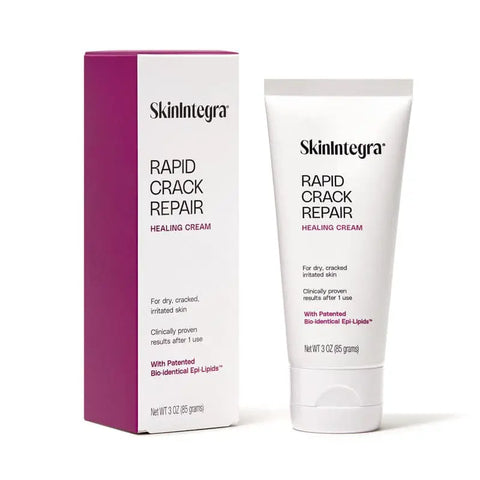
SkinIntegra is formulated to rapidly heal cracked heels without causing irritation. Its patented formula features 25% urea, a recommended urea strength for moisturization and exfoliation, and lactic acid, an alpha-hydroxy acid that is also used as a peeling agent, but with added humectant benefits that can promote healing. It is specifically designed to heal cracked heels while reducing potential side effects by avoiding salicylic acid to advance patient care and well-being. SkinIntegra prioritizes using natural ingredients without fragrance or dyes and incorporates hyaluronic acid and other barrier renewing ingredients that are skin compatible, which helps the skin retain moisture and stay hydrated without breaking down the surrounding tissue.
Want a complete care routine for cracked and bleeding heels? This clinical guide shows how to treat severe heel fissures safely and effectively — especially for diabetic skin.
Assessing Urea-40 vs. SkinIntegra: Clinical Trial Results
Methodology
The Western University Health Sciences College of Podiatric Medicine conducted an IRB approved double-blind study to assess the comparative efficacy of Urea-40 vs. SkinIntegra in patients with cracked heels. They enrolled 48 participants who were assessed every two weeks over the course of 28 days of treatment. Each participant was placed in one of two groups and was given either Urea-40 or SkinIntegra to utilize daily during the course of the study. Follow up visits included detailed records of xerosis and fissure progression. Then parameters were analyzed.
Results
The SkinIntegra group demonstrated a significantly faster rate of healing compared to the Urea-40 group (Figure below). At both the 2-week and 4-week mark, all 8 efficacy and tolerability parameters showed improvement in the SkinIntegra group with the most notable changes in dryness, cracking, pain, and erythema over the first 2 weeks. In comparison, the Urea-40 demonstrated less improvement with changes in only 5⁄8 parameters. The Urea-40 also demonstrated irritation with extended application.

The study findings support that SkinIntegra may offer a more efficacious, tolerable, and cost-effective alternative to Urea-40 for managing cracked heels. Despite some inherent limitations including a relatively small sample size and limited 4-week study duration, the evidence presented demonstrates some advantages of SkinIntegra over the current standard of care, Urea-40.
Source: Randomized, Double Blind Clinical Trial conducted by The Western University Health Sciences College of Podiatric Medicine. March 2024.
Conclusion
Cracked heels can be more than just a cosmetic concern; they can be a sign of underlying health issues, including diabetes. By understanding the causes and adopting appropriate treatment options, you can improve your foot health and overall well-being. SkinIntegra’s Rapid Crack Repair offers a novel topical treatment option now clinically proven to work faster with less risk of irritation than the current standard of care, Urea-40. It is especially well suited for individuals with diabetes who experience greater skin sensitivity and are more prone to infections.
